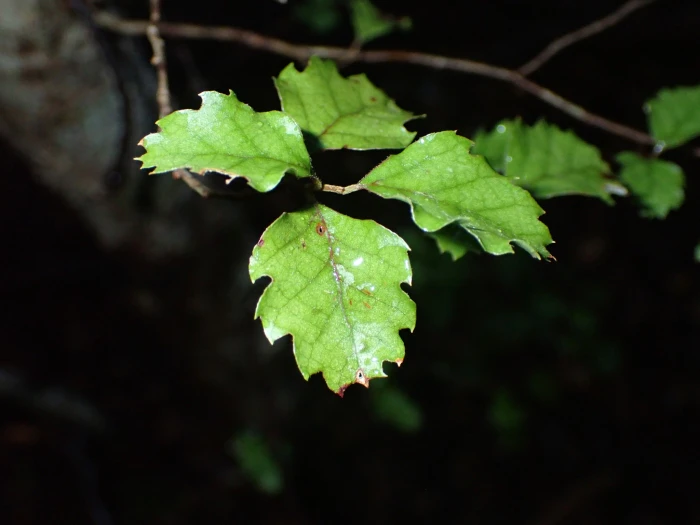Red Beech
(Nothofagus fusca)
Red Beech (Nothofagus fusca)
/
/

georgiasteel
Public Domain
Image By:
georgiasteel
Recorded By:
Copyright:
Public Domain
Copyright Notice:
Photo by: georgiasteel | License Type: Public Domain | License URL: http://creativecommons.org/publicdomain/zero/1.0/ | Rights Holder: georgiasteel | Publisher: iNaturalist | Date Created: 2021-04-17T11:27:39-07:00 |



















































Estimated Native Range
Climate Requirements for Fairfax, Virginia
| This Plant | Your Site | Plant Suitability for Your Location | ||
|---|---|---|---|---|
| • Precipitation | 25" - 203" | 41" | Aquatic | Aquatic |
| • High Temp. | 61°F - 78°F | 88°F | Your summers may be too hot for this plant. | Too hot |
| • Low Temp. | 22°F - 43°F | 25°F | Your winter temperatures are normal for this plant | Excellent |
This plant should grow well at your location with about N inches per year (Y minutes per month) of irrigation.
Summary
Nothofagus fusca, commonly known as Red Beech, is a deciduous tree native to the temperate rainforests and lower montane forests of New Zealand. It can reach heights of 35-60 feet (10-18 meters) with a spread of 16-24 feet (5-7 meters). The Red Beech has a straight trunk with smooth, dark bark and a rounded canopy. Its leaves are bright green, turning yellow to red in the autumn, and the tree produces small, inconspicuous flowers followed by woody fruit capsules.
The Red Beech is valued for its durable timber and is also used for ornamental purposes in large gardens and parks. It is known for its beautiful fall foliage and its ability to thrive in a range of soil types, although it prefers moist, well-drained soils. In cultivation, it requires full sun to part shade and regular watering, especially in drier climates. While it is not typically prone to serious pests or diseases, it can suffer from root rot in poorly drained soils. Due to its size, it is not suitable for small gardens. It is not considered invasive outside its native range, but gardeners should be mindful of its potential size when planting.CC BY-SA 4.0
The Red Beech is valued for its durable timber and is also used for ornamental purposes in large gardens and parks. It is known for its beautiful fall foliage and its ability to thrive in a range of soil types, although it prefers moist, well-drained soils. In cultivation, it requires full sun to part shade and regular watering, especially in drier climates. While it is not typically prone to serious pests or diseases, it can suffer from root rot in poorly drained soils. Due to its size, it is not suitable for small gardens. It is not considered invasive outside its native range, but gardeners should be mindful of its potential size when planting.CC BY-SA 4.0
Plant Description
- Plant Type: Tree
- Height: 35-60 feet
- Width: 16-24 feet
- Growth Rate: Rapid
- Flower Color: N/A
- Flowering Season: Non-Flowering
- Leaf Retention: Evergreen
Growth Requirements
- Sun: Full Sun
- Water: Medium
- Drainage: Medium
Common Uses
Low Maintenance
Natural Habitat
native to the temperate rainforests and lower montane forests of New Zealand
Other Names
Common Names: Clinker Beech, Red-Birch, Tawhai Raunui
Scientific Names: Nothofagus fusca, Fagus fusca, Fuscospora fusca, Nothofagus fusca var. fusca
GBIF Accepted Name: Nothofagus fusca (Hook.f.) Oerst.